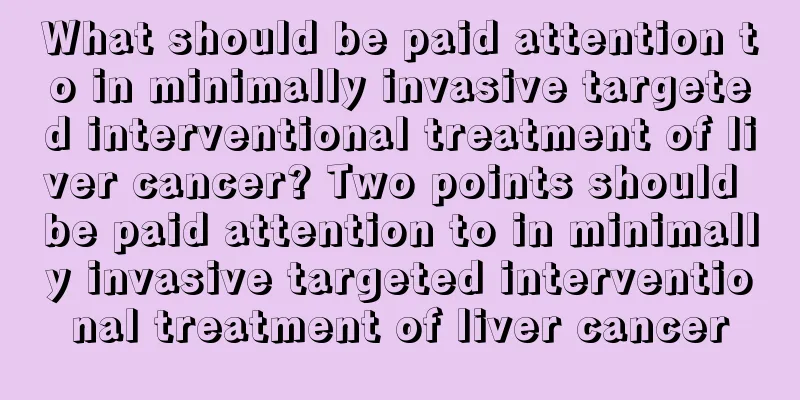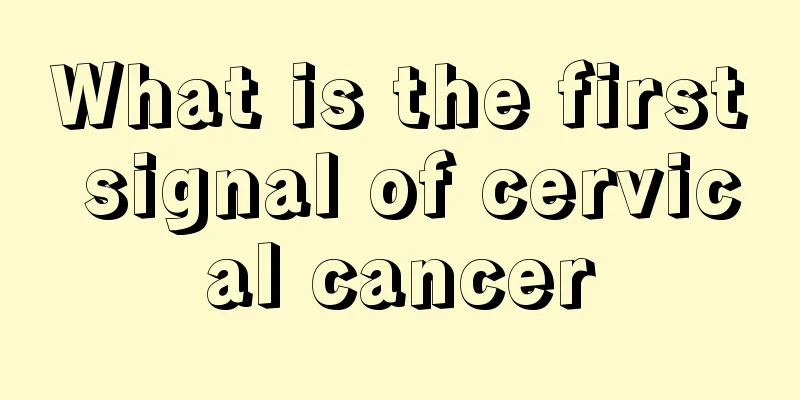What should be paid attention to in minimally invasive targeted interventional treatment of liver cancer? Two points should be paid attention to in minimally invasive targeted interventional treatment of liver cancer

|
Minimally invasive interventional (targeted) therapy is a modern high-tech minimally invasive or non-invasive treatment technology. Under the guidance of medical imaging equipment, special guide wires, catheters and other precision instruments are sent into lesions, blood vessels or natural channels to make clear diagnosis and precise local treatment of lesions in the body. It can be mainly divided into intravascular minimally invasive interventional therapy and non-intravascular minimally invasive interventional therapy, which has the characteristics of no surgery, no pain, fast recovery, good effect and small reaction. Minimally invasive interventional targeted therapy has become the recognized first choice for non-surgical treatment of liver cancer, but to achieve the maximum effect, the timing of treatment must be chosen correctly. Timing of minimally invasive targeted interventional therapy for liver cancer 1. The interval period should be determined according to the specific situation, such as tumor size, iodized oil accumulation, liver function changes, blood count and general condition. Generally, it can be repeated every 4 to 6 weeks. For advanced liver cancer, one embolization cannot completely control tumor growth and requires two or more TACE and/or other treatment methods. 2. Basic conditions for choosing re-treatment: the previous treatment was effective; the tumor shrank; the AFp level was still high or increased; angiography showed that there were still lesions that had not been filled with iodized oil or new lesions; liver function was normal or slightly abnormal, and it was estimated that the patient could accept re-treatment. The general principle is to minimize the number of treatments while keeping the tumor under control and surviving with the tumor, so as to improve the patient's quality of life and reduce the economic burden. |
<<: How to prevent liver cancer? Experts on liver cancer prevention give 4 suggestions
Recommend
Nursing for trigeminal neuralgia caused by toothache
Only patients with more severe toothache will dev...
How to maintain the prostate? Two kinds of food can save the fragile prostate
Prostate cancer is a common malignant tumor of th...
What are the methods for diagnosing testicular cancer
Testicular cancer, as the name implies, occurs in...
What is the principle of ultrasonic teeth cleaning? What are the advantages of ultrasonic teeth cleaning
Speaking of ultrasonic teeth cleaning, I believe ...
What will excessive use of eyes lead to
As the saying goes, eyes are the windows to the s...
What is the correct right foot posture for an automatic transmission?
As we all know, there are more and more automatic...
The difference between old brown sugar and brown sugar
Although brown sugar looks ordinary, it has many ...
What are the symptoms of female bladder cancer
Common symptoms of bladder cancer in women includ...
I always have bad breath
People with bad breath are particularly distresse...
Can colon cancer heal itself? What are the treatments for colon cancer?
Colon cancer is a tumor that cannot heal itself. ...
Current status of diagnosis and treatment of thyroid cancer
Many patients feel very desperate when they hear ...
What kind of underwear is best to wear?
Women need to pay attention to many issues when c...
How to prevent nasopharyngeal cancer in life
Among the many cancer diseases, I believe everyon...
Chaihu Shugan San
Chaihu Shugan San is a common traditional Chinese...
What are the symptoms of liver cancer? The most common clinical manifestations of liver cancer patients
At present, the risk factors for liver cancer in ...









